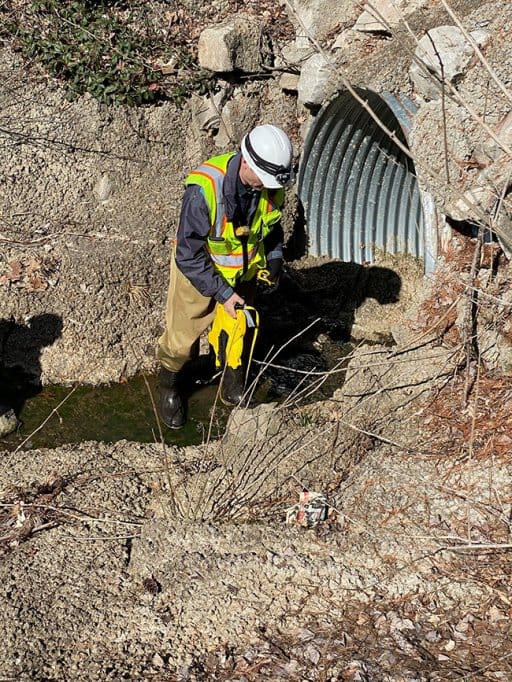An existing 785-foot Corrugated Metal Pipe (CMP) culvert, with a diameter ranging from 66” to 102”, was suffering from severe degradation. The culvert flowline was rusted through for much of the length, and the entrance was damaged during a heavy rain event, requiring an emergency repair. There were also reports of increased upstream flooding following the repairs. M3 was retained to address the degradation, flooding and the damage sustained by the culvert.
M3 first performed a field condition assessment and found the existing CMP culvert to be “fully deteriorated”, which implies a high risk of structural failure. Any rehabilitation alternative needs to assume the existing culvert has no remaining structural capacity. M3 then prepared an Alternatives Analysis that evaluated open cut replacement, rehabilitation of the existing culvert using geopolymer lining, and rehabilitation of the existing culvert using CIPP lining.
Alternatives were evaluated based on 10 design factors: hydraulic capacity, design life of the proposed improvement, construction cost, construction duration (time out of service), impact to residents, the number of easements required, constructability risk, utility relocation, impacts to traffic, and tree conservation. Each design factor was assigned a relative weight, and each alternative was scored from 5 (best) to 1 (worst). The preferred alternative included a combination of CIPP liner and culvert replacement at the upstream end with a larger diameter pipe to reduce flooding.
As part of the project, M3 performed hydraulic modeling, acquired easements, and prepared construction documents.

